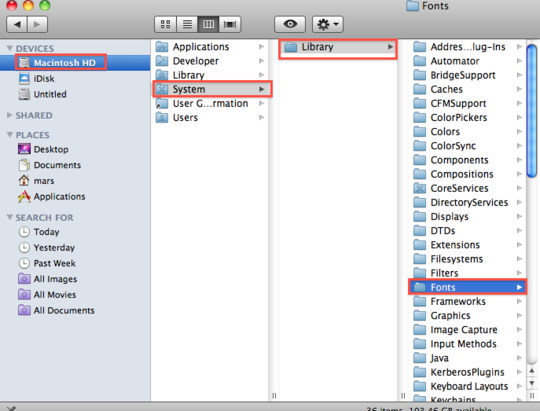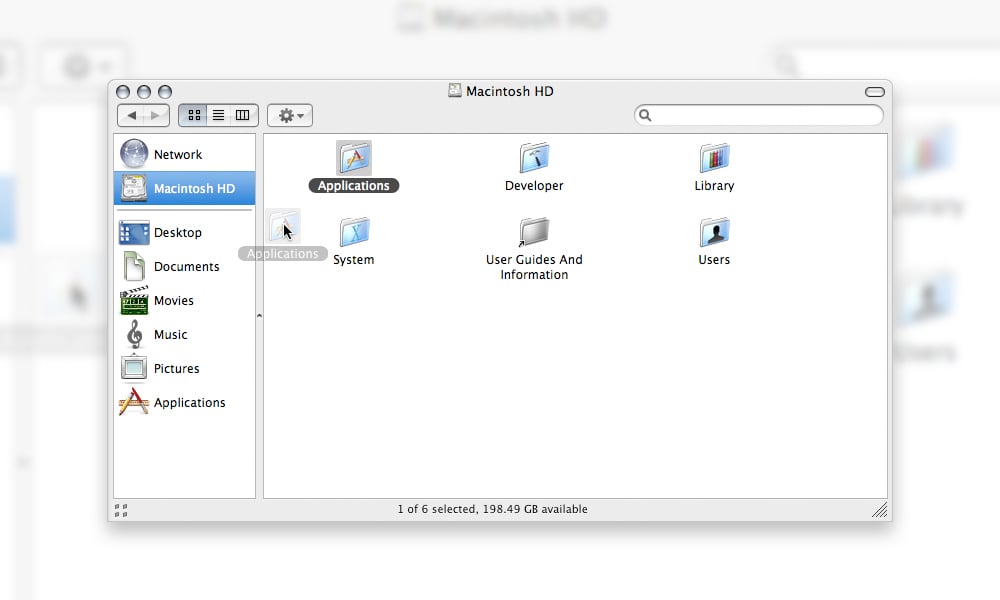Get Library Folder Mac
Oct 03, 2018 Inside the home folder on your Mac is a Library folder that stores app-specific files and settings, personal settings, and some data. The files and settings in the Library folder should be left. The default behavior of Lion is to hide your user Library folder. To get to it Option-click the Go Menu in the Finder and choose Library. crarko adds: OK, Apple that's kind of crazy.Holding down the Option key with the Go menu selected causes 'Library' to appear in the list. Before going ahead with the steps to Access the Hidden Library Folder on your Mac, you need to be aware that /Library Folder contains important Data and Files related to Mac User Accounts. Hence, make sure that you are accessing the Library Folder for a good reason and you do know as to what you are trying to achieve. Ever since Lion (OS X 10.7), Apple has hidden your personal Library folder (/Library) by default. In Lion and Mountain Lion (OS X 10.8), you could make the folder visible, but it required some work.
Dec 19, 2016 Perhaps, OS X 10.6 Snow Leopard could be the last Mac OS that allowed easy access to user library folder. Thereafter, we saw a number of Mac operating systems wherein accessing user library was a hard task forever the power users. Fortunately, in newer Mac versions, the difficulty in accessing this folder has considerably reduced. Organize files in folders on Mac. Everything on your Mac—documents, pictures, music, apps, and more—is organized in folders. As you create documents, install apps, and do other work, you can create new folders to keep yourself organized. Dec 12, 2016 From the Mac OS Finder, go to the Users home folder Pull down the “View” menu and choose “View Options” Choose “Show Library Folder” in the settings options for the User home folder.
Your Photos library holds all your photos, albums, slideshows, and print projects. If your library is large, and you want to free up storage space on your Mac, turn on iCloud Photo Library and use Optimize Mac Storage, or move your library to an external drive.
Before you start, be sure to back up your library.
Prepare your drive
You can store your library on an external storage device, such as a USB or Thunderbolt drive formatted as APFS or Mac OS Extended (Journaled).1 Find out how to check the format of your external storage device.
To prevent data loss, Apple doesn't recommend storing photo libraries on external storage devices like SD cards and USB flash drives, or drives that are shared on a network.
Move your Photos library to an external storage device
- Quit Photos.
- In the Finder, go to the external drive where you want to store your library.
- In another Finder window, find your library. The default location is Users > [username] > Pictures, and it's named Photos Library.
- Drag your library to its new location on the external drive. If you see an error, select your external drive's icon in the Finder, then choose File > Get Info. If the information under Sharing & Permissions isn't visible, click , then make sure the 'Ignore ownership on this volume' checkbox is selected. If it's not selected, click to unlock it, enter an administrator name and password, then select the checkbox.2
- After the move is finished, double-click Photos Library in its new location to open it.
- If you use iCloud Photo Library, designate this library as the System Photo Library.
Delete original library to save space
After you open your library from its new location and make sure that it works as expected, you can delete the library from its original location.
In a Finder window, go back to your Pictures folder (or whichever folder you copied your library from) and move Photos Library to the trash. Then choose Finder > Empty Trash to delete the library and reclaim disk space.
Open another Photos library
If you have multiple libraries, here's how to open a different one:
- Quit Photos.
- Press and hold the Option key while you open Photos.
- Select the library that you want to open, then click Choose Library.
Photos uses this library until you open a different one.
Learn more

If you have a permissions issue with your library, you might be able to resolve the issue by using the Photos library repair tool.
1. You can't move your library to a disk that's used for Time Machine backups.Delete library file mac download.
2. If the volume isn't formatted APFS or Mac OS Extended (Journaled), or has been used for Time Machine backups but hasn't been erased, this checkbox will either not be present, or won't be selectable after unlocking. Erase and reformat the drive for this option to be available.
You may need to access content in the user Library folder to troubleshoot problems with your Adobe applications. The user Library folder is hidden by default in macOS X 10.7 and later releases. Use one of the following methods to make the user Library content visible.
Hold down the Alt (Option) key when using the Go menu. The user Library folder is listed below the current user's home directory.
To work with libraries created in Final Cut Pro X 10.1 – 10.2.3, you can update existing libraries when you first open Final Cut Pro 10.3 or later, or you can update them later.Libraries updated for Final Cut Pro X 10.3 or later aren't compatible with earlier versions of Final Cut Pro X. Final Cut Pro 10.3 included fundamental changes to libraries. Back up your files before you update. Final cut mac. Projects and events from Final Cut Pro X 10.0.9 and earlier cannot be updated for Final Cut Pro X 10.3 or later. You should complete any active projects before you update.
Library Folder Mac
Note: After you open the Library folder, you can drag the Library icon from the top of that window to the Dock, sidebar, or toolbar to make it readily accessible.
For more information, explanations, and ideas, see 18 ways to view the ~/Library folder in Lion and Mountain Lion.
More like this
Mac Library Folder Missing
Twitter™ and Facebook posts are not covered under the terms of Creative Commons.

Legal Notices Online Privacy Policy